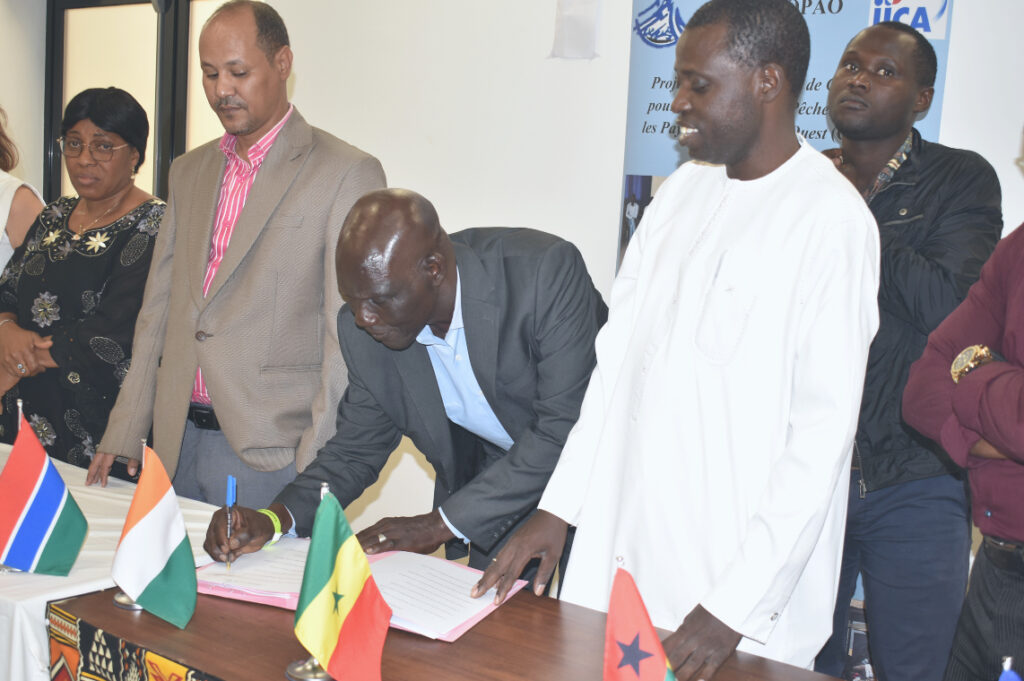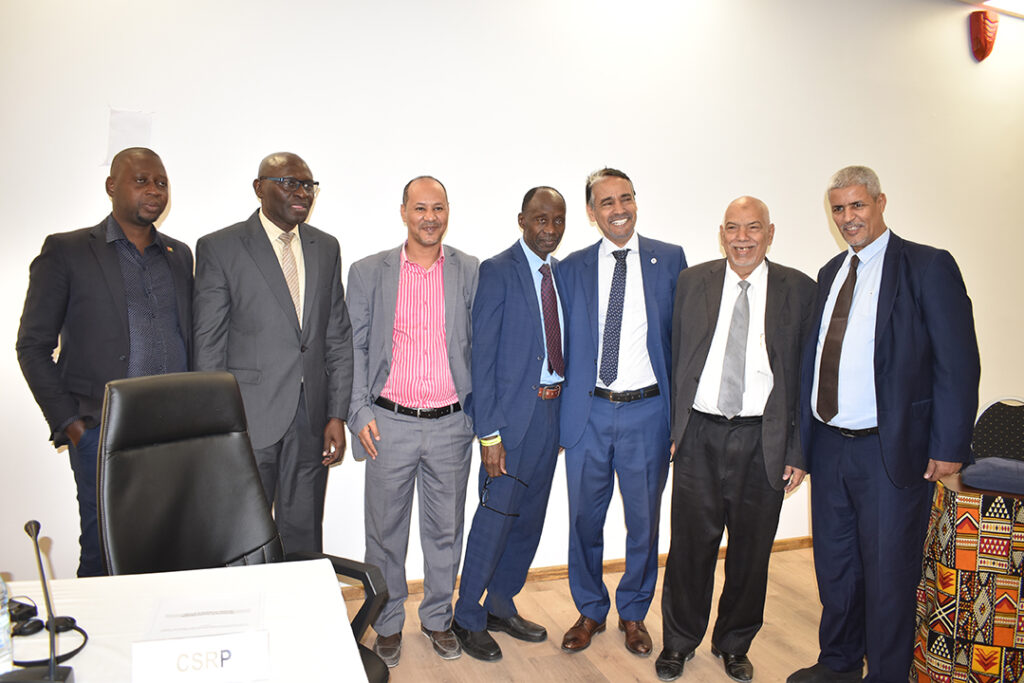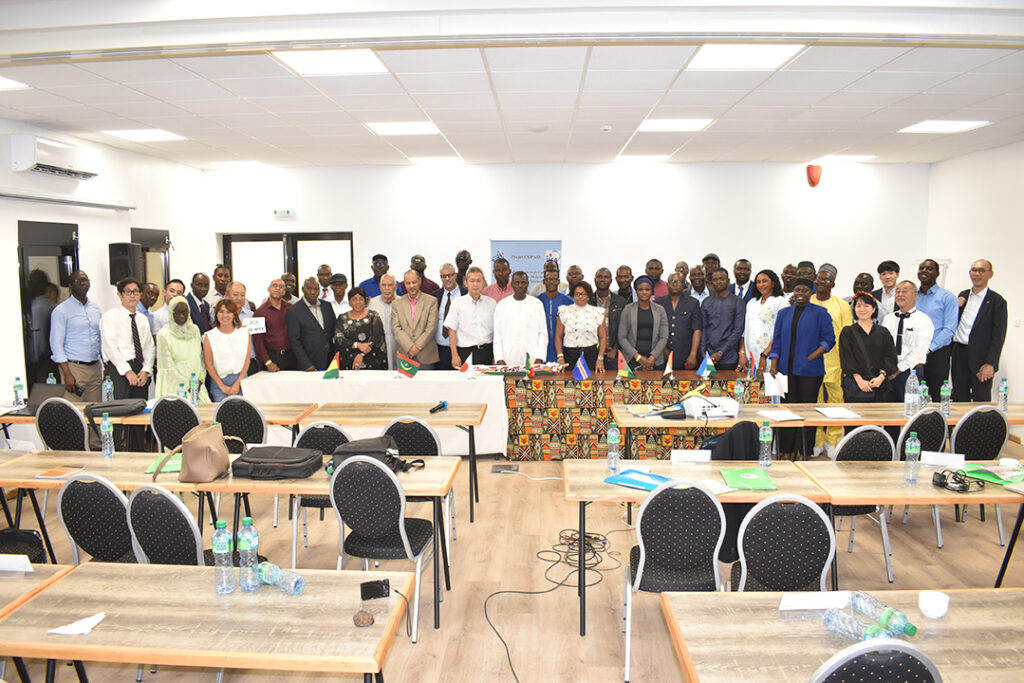4.3.2 Disseminate best practices in the region to neighbouring regions and countries
- Review success stories and analyse their factors
- Team up with fisheries administrators and fishermen’s leaders
- Use opportunities for inter-local collaboration of resource management organisations
- Use partnerships among national resource management organisations
- Use sub-regional fisheries bodies in West Africa
Review success stories and analyse their factors.
To promote the co-management of fisheries resources, the first step is to clarify what is being promoted. The ‘what’ here refers to various concrete examples of how to benefit[1] resource users. If the resource management activities in a fishing village are successful, resulting in significant resource restoration reflected in the improvement of fishermen’s livelihoods and a high level of local people’s satisfaction with these activities, the factors that lead to the success of these activities are important. Whether it is awareness-raising activities to promote the unity of purpose among the population, clarification of the motivation for the activities through participatory research, cooperation of migrant fishermen, or strengthening of inter-regional cooperation of resource management organisations, it is necessary to review the success stories where various factors overlap and analyse these factors and sequence them one by one. This will clarify the relationship between the input and output. Each of the ‘links between activities and results’ analysed becomes a tool for disseminating the fisheries resource co-management to the surrounding regions and countries.
Team up with fishery administrators and fishermen’s leaders.
To popularise the co-management of fisheries resources in the surrounding areas, an extension team[2] will consist of fisheries administrators working at the local level and leaders (fishermen) of resource management organisations working together with them on a daily basis. The extension team, armed with the tool that is the result of the analysis of the success stories, will be responsible for delivering messages introducing the concept of co-management of fisheries resources on various occasions, as described below. Leaders (fishermen) of resource management organisations can be persuasive in telling their own stories to resource users in the surrounding areas because they have experienced the best practices of success stories. The explanation of leaders (fishermen) is complemented by the administrative officers’ explanation of administrative perspectives and administrative support activities to resource management organisations and resource users.
Use opportunities for inter-local collaboration of resource management organisations.
In the case of resources that migrate in the coastal zone, or even of stationary resources, where fishers seasonally migrate and operate from outside areas, management activities aimed at these resources require discussion and cooperation with fishers and organisations other than the resource management organisation concerned. For this purpose, opportunities and platforms for discussion are set up to share recognition of problems and seek collaboration between the two parties (see ‘2.3 Strengthening the collaboration between several fishing villages’). These situations provide an excellent opportunity to popularise the concept of the co-management of fisheries resources. If the resource management organisation has been successful in its previous resource management activities, it can use the ‘linkage between activities and the results’ tool mentioned above to persuade resource users in other localities to join and accept the concept of fisheries resource co-management.
Use partnerships among national resource management organisations.
The National Executive Bureau of the CLPA Networks, which positions itself as a national federation of CLPAs, was organised on 15 June 2017 in Senegal. The objective of this organisation is to exchange information between fishermen leaders working in the different CLPAs, share resource management initiatives from each CLPA, and strengthen the links between CLPAs. Information on successful fisheries resource co-management cases accumulated by each CLPA is first shared with the National Executive Bureau of the CLPA Networks, which then disseminates the concept and knowledge of successful fisheries resource co-management to CLPAs and related organisations throughout the country. Even if this approach is adopted, the actual extension of activities in the field is conducted by an extension team composed of fisheries administrators at the field level and (fishermen) leaders of the resource management organisations, as they link activities to results based on the success stories.
Use sub-regional fisheries bodies in West Africa.
West African fishery resources include many migratory resources that move across national boundaries. Fishing groups also move across national borders in search of sedentary resources with high commercial value. When it comes to promoting the co-management of fisheries resources in these circumstances, resource management activities by one country alone may not be sufficiently effective. Hence, it is necessary to popularise the concept of co-management of fishery resources to surrounding countries. How can the concept of fisheries resource co-management be popularised in surrounding countries where it is not yet well known? One way would be to draw on successful resource management cases from neighbouring countries with similar fishing environments, fishing methods (boats, gear, and methods), temperament, and culture of fishermen. Another way is through bilateral relations or sub-regional fisheries bodies in West Africa, which can be effective in exchanging knowledge, information, and people.
West African fishery resources include many migratory resources that move across national boundaries. Fishing groups also move across national borders in search of sedentary resources with high commercial value. When it comes to promoting the co-management of fisheries resources in these circumstances, resource management activities by one country alone may not be sufficiently effective. Hence, it is necessary to popularise the concept of co-management of fishery resources to surrounding countries. How can the concept of fisheries resource co-management be popularised in surrounding countries where it is not yet well known? One way would be to draw on successful resource management cases from neighbouring countries with similar fishing environments, fishing methods (boats, gear, and methods), temperament, and culture of fishermen. Another way is through bilateral relations or sub-regional fisheries bodies in West Africa, which can be effective in exchanging knowledge, information, and people.



1. The term ‘benefit’ here includes both immediate and future long-term profit.
2. The extension team does not have to be formal, but can be composed of several people on a case-by-case basis. The key is a partnership between administrators who know about activities on the ground and resource users who have experienced success stories.
3. This is the Sub-Regional Fisheries Commission (SRFC) with seven West African member states, which are six coastal states (Mauritania, Senegal, The Gambia, Guinea-Bissau, Guinea and Sierra Leone) and the island state of Cabo Verde.